At Stahl Eye Care Experts we are committed to bringing the latest technology and proven treatments to our patients. There has been significant research of late regarding the potential prevention and control of myopia (nearsightedness).
Recent years have seen a spike in the prevalence of myopia and other eye disorders; according to the National Eye Institute (NEI), myopia has seen a 66 percent increase between 1971-1972 and 1999-2000.
By visiting some of the best eye doctors on Long Island and in Manhattan, you can ensure that your eyesight is well protected.
What is Myopia?
Myopia is an eye condition where you can see objects that are up close clearly, but those that are far away often appear blurred. This condition is also known as nearsightedness.
Nearsightedness is the most common vision disorder among children and people under the age of forty. Myopia progression may intensify during adolescence but tends to slow down in later years.
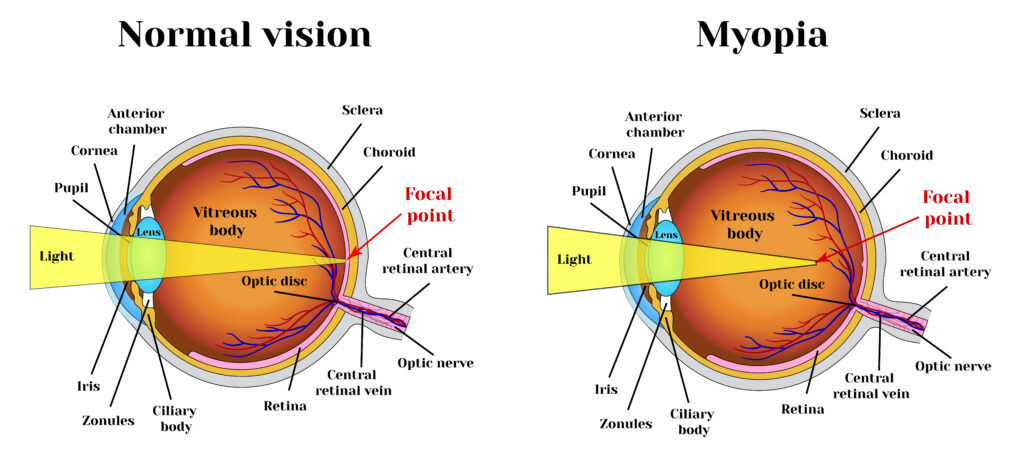
What Causes Myopia?
Nearsightedness is a refractive error that occurs when the eye can’t bend light correctly. Typically, light is refracted by the cornea, which focuses light directly onto the retina.
Once the retina has received the focused light that has passed through the lens of the eye, it converts the light into neural signals and passes them to the brain where the image is processed!
When someone has myopia, light entering the eye does not focus properly onto the retina and instead is focused at a point just in front of it. This error happens when the eyeball is too long or when the cornea is too curved in relation to the length of the eyeball.
As a result, distant objects are refracted incorrectly, resulting in a blurred appearance.
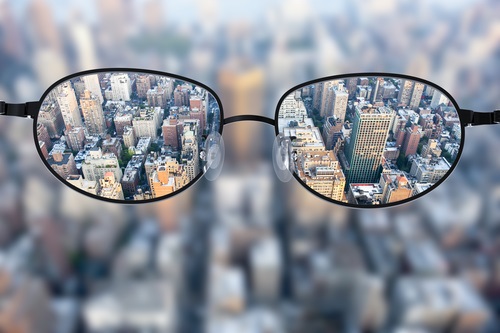
What are the Risk Factors of Myopia?
In most cases, nearsightedness starts during childhood. The main risk factor for myopia is genetics.
Another risk is eye fatigue that comes from focusing while reading or using devices- some believe that our collective increased time spent on computers and handheld devices is contributing to increased levels of myopia.
Little time spent outdoors can also be a risk factor for myopia – research suggests that spending less than 45 minutes per day outdoors can increase the risk of developing myopia,
What are the Different Types of Myopia?
Myopia is a refractive error, and its intensity is measured in diopters (D). -0.25 to -3.00 D represents mild myopia, while a measurement of -6.00 and above means there’s high myopia. Moderate nearsightedness comes at -3.25 to -6.00D. The following are two main types of myopia based on intensity:
Degenerative/Pathological Myopia
While it’s extremely rare, degenerative myopia may eventually lead to legal blindness. It begins at childhood and progresses at a fast rate.
This form of myopia increases the risk of developing other conditions like cataracts. It can also cause glaucoma, retinal detachment, bleeding of internal eye blood vessels, and myopic muscular degeneration. Heredity is the main risk factor.
Simple Myopia
It is also referred to as non-pathological or school myopia. Simple myopia is the most common type.
It comes with a moderate intensity of between -3.25 to -6.00D. Usually, this condition slows down after adolescence. In some cases, it may even become stable.
What are the Symptoms of Myopia?
Some of the main symptoms exhibited by people with nearsightedness include:
- Blurred distance vision
- Headaches
- Eye fatigue
- Squinting
How is Myopia Treated?
The treatment of myopia lies in controlling its progression. There’s currently no cure for the condition.
Methods used in slowing down the condition are usually referred to as myopia control.
What is Myopia Control?
These are measures taken by ophthalmologists and optometrists towards controlling nearsightedness. Through myopia control, the risk of developing complications such as cataracts are minimized.
What are the Different Types of Myopia Control?
Just as there are different forms of myopia, there are also different treatments. The most commonly used treatment options are:
- MiSight 1 day contact lenses
- Orthokeratology/Corneal Refractive Therapy
- Atropine eye drops
- Multifocal eyeglasses
- Multifocal contact lenses
Factors that influence the type of method used include myopic intensity and age.
At our eye clinics in Long Island and Manhattan, we provide our patients with all these treatment options.
MiSight 1 day
Over the last 40 years, the incidence of nearsightedness, or myopia, has doubled worldwide. Given the difficulties that high levels of nearsightedness cause, researchers have been looking for ways to slow or halt the progression of myopia. At Stahl, we are proud to feature MiSight contact lensMiSight 1 day is a daily soft contact lens worn during the day and thrown away at night.
Children from the age of 8 to 12 can have a prescription. They can wear them for 10 hours a day for six days a week to receive the full benefit.
MiSight lenses use concentric rings with different powers so that the peripheral vision isn’t as focused. This tricks the eye into slowing down its growth so that it doesn’t get too long.
Is it Safe for Children to Use MiSight Lenses?
MiSight 1 day lenses have been studied for use, safety, and results. Its FDA approval for children as young as 8 shows it to be beneficial and safe.
As with all contacts, MiSight does increase the risk for eye infections. Ensuring your child practices good contact lens hygiene can reduce this risk.
What are the Advantages of MiSight 1 day?
Peer-reviewed studies show that MiSight can slow myopia progression for your child. There’s also no cleaning or disinfection needed when wearing the lenses.
The soft lenses are comfortable to wear. Unlike other types of lenses, your child’s vision is clear immediately after insertion.
Who is a Good Candidate for MiSight?
MiSight is ideal for children who:
- Want to correct myopic vision and slow down myopic progression
- Have eyes that are free of diseases
- Are between the ages of 8 and 12 at the start of treatment
- Have a prescription of -0.75 to -4.00 diopters with less than 0.75 diopters of astigmatism
MiSight isn’t designed to correct astigmatism. Some children with smaller eyes also have trouble using these types of lenses, but they are easy to use.
Our eye doctors can test your child and discuss whether MiSight 1 day is the best solution for them.
Wondering if MiSight 1 day could be the right treatment for your child? Contact the eye doctors at Stahl Eyecare Experts for more information and to schedule an appointment today!
Orthokeratology
Special lenses referred to as ortho-k contact lenses are used in this method of treatment. These lenses are gas permeable contact lenses.
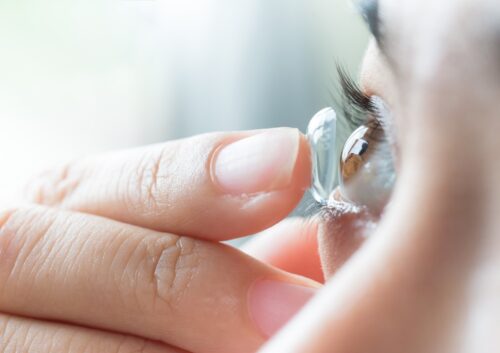
Also known as Corneal refractive therapy, this technique involves the use of FDA-approved therapeutic contact lenses to reshape your cornea while you are asleep.
These apply pressure on the cornea while the user is resting. Over time, there’s a decrease in the pace at which the eyeball elongates. After being used overnight, the contacts’ effects last through to the next day.
By using ortho-k lenses, the patient won’t need glasses or contacts to see clearly at a distance.
Several studies prove that orthokeratology is more effective for myopia control compared to glasses or contacts. With continued use, it highly reduces the elongation of the eye. It may even be able to halt myopia progression in some patients!
Atropine Eye Drops
This is more of a short-term control alternative. Atropine eye drops provide temporary relief from myopia and require repeated use to maintain the effects.
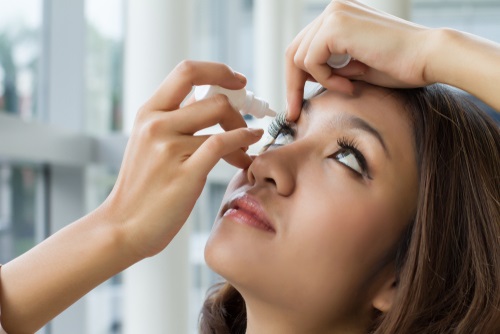
These drops work by dilating the pupil and inhibiting the accommodation of the eye. By disabling the eye’s focal mechanism, eye fatigue is prevented.
This is important because eye fatigue is a known factor for encouraging myopia. Its effects may last for up to eight days.
Many doctors have reservations about using atropine eye drops to control myopia. As a short-term treatment, it works quite well.
But after the first year of treatment, it becomes less effective in treating myopia. There is also not much known about the long-term effects of the medication.
Multifocal Contacts
These contacts correct refractive errors by ensuring clear visual focus at all distances. This means that for myopic individuals, their distant vision is no longer blurred.
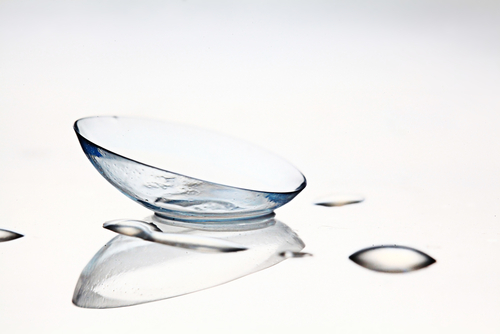
Multifocal contacts are made with rigid gas permeable materials. These materials allow oxygen to enter the eye.
These contacts reduce the progression of myopia more than soft lenses. In children who wear multifocal contacts for nearsightedness, a 50% reduction in symptoms occurred.
At Stahl Eyecare Experts, we keep up with the latest eye care technology. You can rest assured that we’ll only provide you with high-quality contact lenses and care in Long Island.
These glasses work in the same way as multifocal contacts. They help the wearer have clear vision at all distances. They are a good option for patients who can’t tolerate wearing contact lenses.
Multifocal Eyeglasses

Professional Myopia Treatments
If you want the best treatments for your eyes, you need to seek out experienced doctors for your eye care. At Stahl Eyecare Experts, our doctors have the experience you deserve along with access to cutting-edge technology. Experience and technology are two of the many reasons allowing us to offer you the best quality eye care.
Stahl Eyecare Experts has private centers both in Manhattan and on Long Island. Our Long Island state of the art facilities located in Garden City and Hauppauge make it easy for patients to access our eye specialists, whether you are in Nassau or Suffolk County.
Schedule an appointment for myopia control treatments with Stahl Eyecare Experts today!








